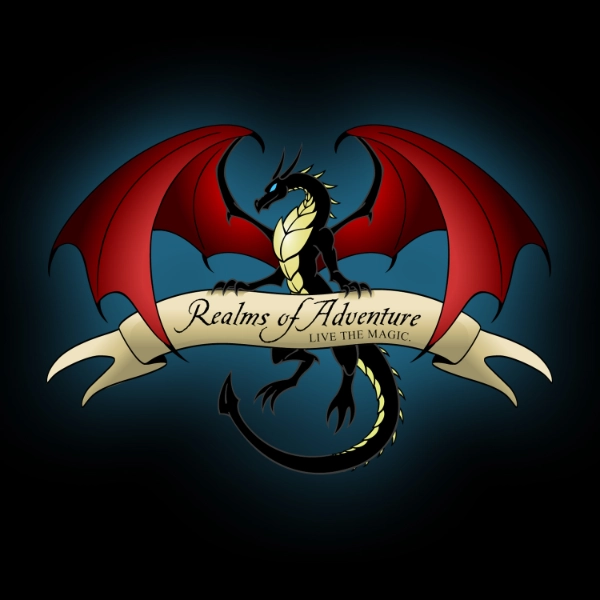[sta_anchor id=”elves-top”]

Dream Elf – Grey Elf – Guari Elf – Sea Elf – Wood Elf – Half-Elf
Distantly related to the Fae, Elves are extremely long-lived and widespread. Although Elves typically have few offspring, their long lives and adaptability have allowed them to thrive in many parts of the world. There are five sub-races of Elves in the world of Adraveth. Players may be Dream Elves, Grey Elves, Guari Elves, Sea Elves, Wood Elves, or Half-Elves. The last and final sub-race, the Dark Elves, are purely spiteful, evil beings and are unsuitable for starting characters.
[sta_anchor id=”dream-elf”]
Dream Elves are the children of Arrawiel, and until very recently, no one was aware of their existence. Most people of the world have never seen one and would be taken aback if they were to see one. Dream Elves are thus called, because for thousands of years they had been confined, albeit willingly, to the realm of dream. One of Arrawiel’s closest companions and advisers, and said to be one of the original gods himself, the Lord of Nightmares, ruled over his namesake portion of the dream realm for millennia bringing disturbing dreams and horrors to all mortal kind. It is unclear precisely when, and forgotten even by the most learned amongst Arrawiel’s faithful, but the Lord of Nightmares attempted to seize control of the entire dream realm, and form it in whole into his own twisted and horrifying liking. Arrawiel may have been usurped were it not for faith and devotion of her children. The Lord of Nightmares was sealed back into his original pocket of the dream realm, and the Dream Elves pledged themselves the eternal guardians of this pocket, ever vigilant to contain the Lord of Nightmares in his gilded cage. Prophecy spoke of a time the Lord of Nightmares would be unwittingly released and would attempt to subvert the mortal world into his new domain. The prophecy also spoke of those who would eventually triumph over and contain him evermore. At this time, the Dream Elves would be released from their vow, and could return to the mortal world. In the year 1110, the prophecy was fulfilled and Dream Elves once again began to appear throughout the world.
Generation upon generation of Dream Elves have been born, lived and died never having left the dream realm. They maintained their own society which was very similar to those already existing in Adraveth, but all of their experience with the other races has been through glimpses of dreams and fractures of memories. For this reason, Dream Elves are very aloof and seemingly “disconnected” from the world around them. Truly they are strangers in a strange land, and this has led many to develop an intense wanderlust whereby they can explore and learn about their new home first hand. With a population estimated to be only in the tens of thousands, this may prove to be problematic for the continuation of the race, as their young people spread to the four corners of the world. During their travels, Dream Elves display a calm curiosity about the world and will often ask seemingly obvious questions in the most dead-pan of ways. Sometimes this will give those around them the idea they are daft or being obnoxious, but this is rarely the case. Additionally, having spent so much time experiencing the irregularities of the dream realm, they seem to not display fear with the ease of other races, and can hide their emotions extremely well.
Dream Elves make excellent mages due to their innate understanding and acceptance of forces beyond typical mortal comprehension. Dream Elves also make fine fighters or rogues, and are well on par with the other races. Clerics are greatly important to Dream Elves and naturally Arrawiel is the deity of choice. In extremely rare instances, a Dream Elf will hear the calling of another deity. Bards are relatively common and highly valued as a means to provide entertainment and keep the culture of the race alive. Since they have arrived in Adraveth, some Dream Elves have made great strides in the scholarly pursuits. While there are not a huge amount of scholars represented, those that find this calling tend to throw themselves fully into it, perhaps to make up for lost time. Many scholars are anxious to learn all they can about this previously unknown race, and will take on a Dream Elf as a student eagerly. This symbiosis seems to be working well so far, and Dream Elves seem able to fit right in with scholars despite their odd behavior, perhaps because scholars are often a bit eccentric themselves.
Dream Elves range in body type much as Humans do, but like other Elven types, they also have pointed ears and do not have facial hair other than eyebrows. Additionally, Dream Elves have pale light blue skin, sometimes with a silver or grayish tinge. Some examples might be periwinkle, cornflower or very pale azure. Dream Elves typically have lifespans of around 250 years. It is unknown at this time if Dream Elves can interbreed with Humans. Since Dream Elves just came back into the world, no Half-Dream Elves are known to exist. Player characters may not in any case be a Half-Dream Elf, since if any were to exist they would be too young to be suitable as a player character.
• Advantages – Health +2 • Sleep 1x/period (“I send you to sleep, 10 minutes.”) • Resist first Sleep effect per period • 1 free purchase of Courage • May choose to gain the benefits of any Society Bonus at character creation
• Disadvantages – Extensive Costuming – Dream Elves must wear pointed ears. They are required to wear blue makeup on all exposed skin in shades of light blue (periwinkle, cornflower, or very pale azure etc.). They may have silver glitter as an accent if they wish.
• Classes Available – Bard, Cleric, Fighter, Mage, Rogue, Scholar
*Note – Dream Elves are an extremely rare and very challenging race to portray accurately. For these reasons it is restricted race and requires staff approval before creating a Dream Elf character. Generally speaking, new players will not be permitted to create Dream Elf characters. In order to play a Dream Elf character, you must notify staff via E-mail no later than 4 weeks before being created at game and a character background 2 weeks prior to play is mandatory, and we may decline anyone at any time for any reason. They may become capped at any time. If a cap in place it will be noted here and/or on the message boards as an announcement. You may check the status at any time by emailing staff. Please email staff with any questions.
[sta_anchor id=”grey-elf”]
Grey Elves are a rare and independent segment of the Elven race. Not nearly as common as Guari, Grey Elves tend to cluster together into communities rarely tolerant of members of other races or even other types of Elves. Grey Elves tend to maintain an air of superiority over other races, even the Agorians. Grey Elves boast that although they are the younger of the two races, they have accomplished just as much (some even claim more). When their Guari cousins took humanity under their protective wing, the Grey Elves warned against it and insisted it was foolish to teach Humans magic and other means that could one day be used against them. The Guari turned a deaf ear to this and the Grey Elves broke away from any but the most casual relations for centuries. To this day Grey Elves mock the decision of the Guari, quick to point out humanities quick breeding, reckless nature and lust for power.
Grey Elves excel in the magical arts and are among the finest mages in the world. Likewise Grey Elves value learning, knowledge and wisdom above all else and the scholar profession is another in which they excel. Grey Elves shun most physical labor and combat. Additionally they consider the rogue profession to be merely a guise for the unskilled that prefer to prey on others. Their culture is well renowned, as is their frequent arrogance. In more racially mixed areas Grey Elves have been better about holding their tongues.
Grey Elves are typically a bit shorter and frailer then their cousins the Guari, but it is fairly difficult to distinguish between the two sub-races. The tell-tale sign of a Grey Elf is the silver markings present under their eyes. Grey Elves have pointed ears and no facial hair other than eyebrows. Occasionally they exhibit the peculiar trait of having gold or silver hair. Grey Elves while less numerous live even longer than Guari Elves, sometimes up to 500 years or more.
• Advantages – Casting Resource +4 OR 3 Purchases of Alchemy OR 3 Ranks of Craft: Merchant • Resist first Sleep effect per period
• Disadvantages – Costuming: Grey Elves must wear pointed ears. They have silver markings along the cheekbones, under the eyes. Usually these markings are as simple as a pigmented line or slight swirl.
• Classes Available – Cleric, Mage, Merchant-Artisan, Scholar
• You may view or download the Grey Elf Racial Packet here.
[sta_anchor id=”guari-elf”]
Guari Elves, sometimes referred to as common Elves, are the most numerous of their race in the world of Adraveth. They can be found in almost every town and city. Guari Elves vary widely in temperament but tend to get along well with the other races. These Elves find most other races, especially Humans, to be a curiosity. Elves were already an old race when Humans first came into the world and immediately the Guari came to observe them and their behavior. The Grey Elves were far too concerned with their own affairs and the strangeness and volatility of Humanity made them keep their distance. Wood Elves dealt with Humanity only where need be, a habit that has continued for the most part to this day. Guari however became involved in Human affairs, teaching them some of the ways of the world and of the magical arts. When the unsavory denizens of the world and the hordes of vicious Orcs and other Goblinoids descended upon Humanity, it was the Guari who helped them to survive. Humanity was able to thrive under the watchful eye of the benevolent Elves. Humanity grew up from its childhood under their care. For this reason Guari and many Humans enjoy each other’s company and can often be found in cooperation. Guari and Dwarves have had a history primarily of cooperation but of occasional violence. Dwarves have long memories but still most often offer Guari begrudging respect.
Guari enjoy leisure and pursuit of the arts above all else. Their bardic ballads and works of art are admired and respected throughout the world. They have spent much of their time involved in those pursuits that interest them and thus are able to perform any profession with great ability.
Physically Guari tend to be close in size to Humans and interbreeding is fairly frequent despite the fact that Elves will often live to be over 300 years old. Guari have pointed ears and no facial hair other than eyebrows. They have gold markings along the cheekbones, under the eyes. Usually these markings are as simple as a pigmented line or slight swirl.
• Advantages – Health +2 OR Casting Resource +2 • Resist first Charm effect per period
• Disadvantages – Costuming: Guari must wear pointed ears. Guari have gold markings along the cheekbones, under the eyes. Usually these markings are as simple as a pigmented line or slight swirl.
• Classes Available – Bard, Cleric, Fighter, Mage, Merchant-Artisan, Monk, Rogue, Scholar
• You may view or download the Guari Racial Packet here.
[sta_anchor id=”sea-elf”]
Sea Elves are the aquatic children of Oleandra. Most people of the world have never seen one and in many cases they are thought to be only a myth told by sailors and fishermen who’ve had too much to drink. Although they are rarely encountered on land, Sea Elves are very real, with a population nearly as large as the Guari. Rather than this population being clustered together however, they are spread throughout the oceans of the world. Sea Elves are marine creatures, being found only in saltwater oceans and seas. Though they can survive in a freshwater environment and even breathe there, it is extremely unpleasant so they do so very rarely. Sea Elves need to immerse themselves fully in saltwater for at least an a few hours 3-4 times per week in order to maintain good health and prevent from developing painfully dried out skin. These marine elves can breathe equally well out of water as they can under it, but still very few venture from the depths. All Sea Elves have some degree of fear towards exploring the world on land, but an intrepid few allow their curiosity to overcome this fear at least to some degree. They are somewhat familiar with the terrestrial world based on their exploration of sunken ships or spying on land dwellers from hidden coves or from under piers. Though they have a base familiarity with worldly items, the practicality or true understanding of these items often escapes them. When Sea Elves do befriend land dwellers they are often very curious about some of the most seemingly simple items. Ignorance of land-born items or cultures will often cause confusion and occasionally get Sea Elves into trouble. For example Sea Elves have a fondness for alcohol often taken from bottles aboard sunken ships, but since they do not brew any themselves they have little experience or tolerance for it. Inebriation often will raise their curiosity while inhibiting their cautious natures.
Sea Elves should not be mistaken for uncivilized simpletons however. They form their own towns and cities complete with government and culture. Items and art objects crafted by sea elves are often of great beauty and fetch handsome prices (even though many people doubt their reported origins). Ancient tomes chronicle supposed visits by land dwellers to Sea Elven cities, though these reports can neither be confirmed nor denied. If they were the ramblings of madmen, a clever hoax or true reports made possible through magical means no one is certain. Technologically speaking, Sea Elves make use of the natural materials they have on hand, crafting arms and tools from extremely hard coral or stone from the ocean floor. There are rumors of a type of metal the Sea Elves have discovered and jealously guard that is as strong as steel yet does not rust and is only half the weight of a comparably sized steel item.
Sea Elves make excellent warriors due to their natural strength and agility. Sea Elves also make fine rogues, being used to using stealthy tactics to avoid large predators or observe land dwellers from a distance. Clerics are greatly important to Sea Elf society and naturally Oleandra is the deity of choice though sometimes other deities are chosen. Entertainers are held in high esteem in Sea Elf society and occasionally their unique brand of bardic entertainment finds its way to the surface. Lastly, some do choose the path of Merchant-Artisan helping to promote trade between the various Sea Elven communities and sometimes the surface world. Most traditional magics and scholarly pursuits are out of reach because of the functioning of elemental schools under water or lack of ability to study the works of other races, Sea Elves own writing being limited to letters carved onto stone or other non-organic materials.
Sea Elves range in body type much as Humans do, but even the slightest of build possess great strength and fortitude based upon the density and pressure of living so deep in the water as well as the musculature required to be adept swimmers. Like other Elven types, they also have pointed ears and do not have facial hair other than eyebrows. Additionally, Sea Elves have 3-4 gill slits on each side of their necks and have deep blue skin, typically royal blue or a similar shade. Sea Elves are just as numerous as other Elves, but as previously mentioned they are spread out quite a bit more. Sea Elves typically have lifespans comparable to Guari (300 years). Unlike some of their Elven cousins, Sea Elves cannot interbreed with Humans and no Half-Sea Elves exist.
• Advantages – Health +3 • Endure Elements: Water 1x/period • Healing 1x/period (“I heal my body 5 health.”)
• Disadvantages – Extensive Costuming – Sea Elves must wear pointed ears. They are required to wear blue makeup on all exposed skin in shades of dark blue (Royal, Navy etc.). They must use either makeup or prosthetics to depict gill slits on both sides of the neck.
• Role-playing: Sea Elves are very curious about things they have never seen before, which is just about everything on land. A certain degree of naiveté should be present and something simple that most people take for granted, like a tree, a squirrel, fire etc. can provoke awe or even fear. Additionally since most Sea Elves are ignorant of other races, cultures or customs, it is a challenge to approach most things as if you are seeing them for the first time.
• Classes Available – Bard, Cleric, Fighter, Merchant-Artisan, Rogue
*Note – Sea Elves are very rarely seen in the surface world. They are considered a restricted race and require staff approval before creating In order to play a Sea Elf character, you must notify staff via E-mail no later than 4 weeks before being created at game, and may require a mandatory character background and discussion 2 weeks before the event begins. They may become capped at any time. If a cap in place it will be noted here and/or on the message boards as an announcement. You may check the status at any time by emailing staff.
[sta_anchor id=”wood-elf”]
Wood Elves are a lesser known and reclusive segment of the Elven race. Not nearly as common as Guari, they are more numerous than Grey Elves. Wood Elves take great pleasure in dwelling in the forest, living in harmony with its flora and fauna. Almost all Wood Elves worship their creator, Jerdano, and respect and guard his domain. Wood Elves are often shy and suspicious towards other races until their character and general intent is known. Wood Elves will respect and assist those who regard nature as they do, and will unleash their wrath on those who do not. Wood Elves are particularly hateful of Goblinoids, who despoil the forests and kill those Wood Elves unfortunate enough to be caught alone in their path. Rarely will Wood Elves enter and reside in towns unless it is absolutely necessary. In recent years and in the wake of the Goblinoid wars however, the youngest of their generation have often seen the best way to face the threat is to assist the other races. If more towns fall to the Goblinoids, it will only increase the base camps from which they can strike into the forest. Wood Elves prefer to remain active and take solace in the forest. In more civilized areas, Wood Elves are often nervous and jittery, finding the other races confusing and volatile.
Wood Elves make excellent warriors and rogues using stealthy tactics to keep their forests safe. Although some do become mages, dabblers in the arcane are somewhat rare. Clerics are held in great esteem and Jerdano is the deity of choice.
Wood Elves are typically a bit shorter than the Guari, but possess much greater strength. Still it is fairly difficult to distinguish between the two sub-races. They also have pointed ears but do occasionally have facial hair. They have brown or black markings along the cheekbones, under the eyes. Usually these markings are as simple as a pigmented line or slight swirl.
Wood Elves are less numerous than other elves and have relatively short (150 year) lifespans.
• Advantages – Resist first Root spell per period • Health +2 • First Purchase of Poison Tolerance is half price
• Disadvantages – Costuming: Wood Elves must wear pointed ears. Wood Elves have brown or black markings along the cheekbones, under the eyes. Usually these markings are as simple as a pigmented line or slight swirl.
• Classes Available – Cleric, Fighter, Mage, Rogue
• You may view or download the Wood Elf Racial Packet here.
[sta_anchor id=”half-elf”]
Half-Elves are the offspring of a Human and an Elf parent. They do not actually have a culture of their own, rather adopting the culture they grow up in, either of their Human or Elven parent. The life of a Half-breed is often a difficult one in which they are never truly accepted by either race and are seen as something of an anomaly. Still, Human and Elf pairings do happen and Half-Elves can be found anywhere Humans and Elves can. Half Elves are most numerous in the Twin Kingdoms, where Human and Elf pairings are common and widely accepted. The queen of the Twin Kingdoms is in fact a Half-Elf herself. Bigotry is still leveled against these Half-breeds in many parts of the world and sometimes even within the Twin Kingdoms itself, but Half-Elves often find acceptance among adventurers who in their own way are often seen as being different from the norm of their society.
When creating a Half-Elf character, the player must decide if their elf parent was Guari, Wood Elf or Grey Elf. Half-Elves have all professions open to them, but this is largely dependent on how and where they grew up. The professions available to the culture where they grew up will dictate the professions available to them.
• Advantages/Disadvantages/Classes Available – This varies by parentage. A player should choose if he/she takes more after their Elven parent or their Human one. The advantages and disadvantages and available classes of the predominant parent will apply to the character. If for instance, the character tends to follow more along the racial traits of his Elven parent, he may take the Elven advantages but must also wear the pointed ears. It should be noted however that Half-Elves will NEVER inherit the facial markings present for their full Elf parent. This is often how Half-Elves are distinguished from full Elves.
